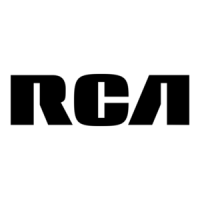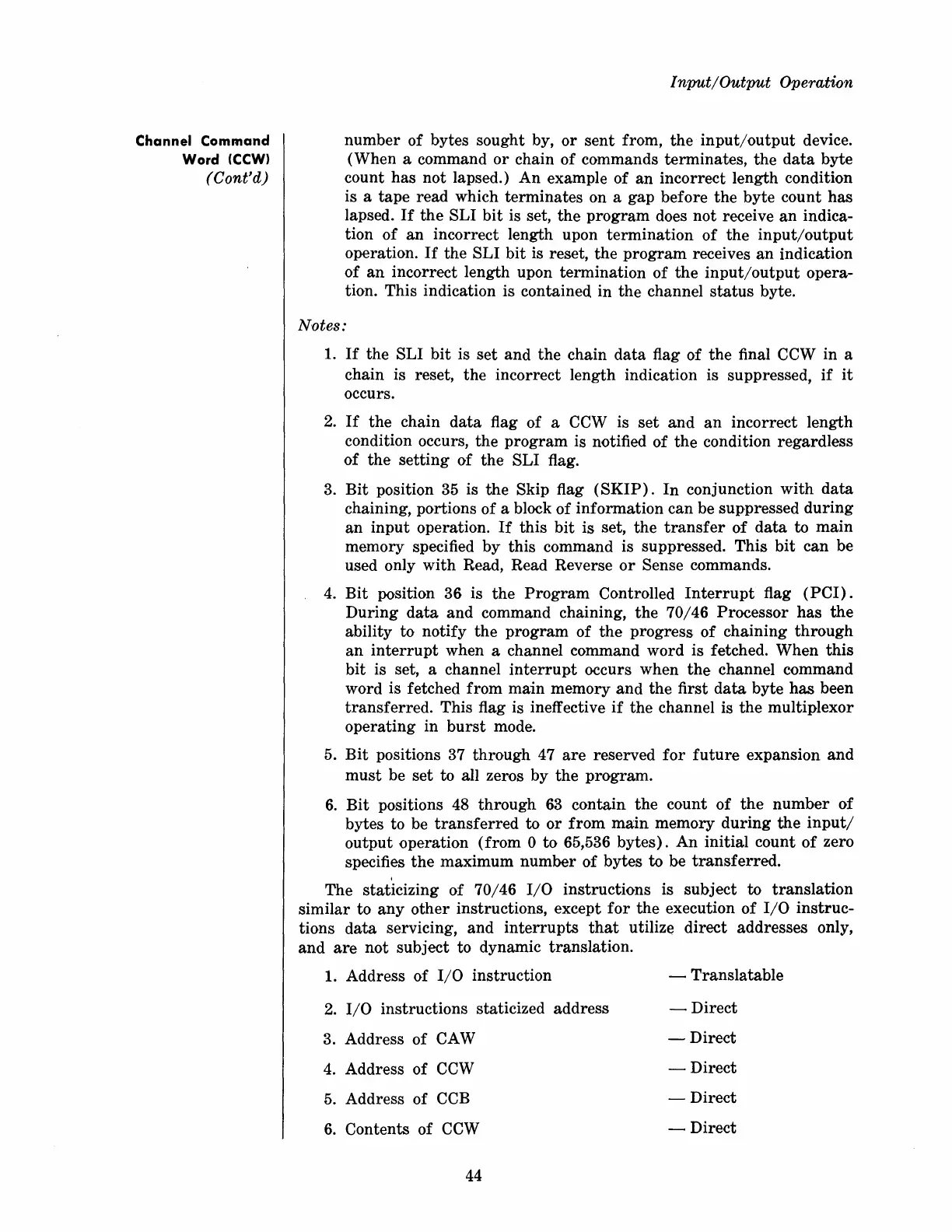Channel Command
Word (CCW)
(Cont'd)
Input/Output
Operation
number of bytes sought by,
or
sent
from, the
input/output
device.
(When a command
or
chain of commands terminates, the
data
byte
count has not lapsed.) An example of
an
incorrect length condition
is a
tape
read which terminates on a
gap
before
the
byte count
has
lapsed.
If
the
SLI
bit
is set,
the
program
does not receive
an
indica-
tion
of
an
incorrect length upon
termination
of
the
input/output
operation.
If
the SLI
bit
is reset, the
program
receives
an
indication
of
an
incorrect length upon termination of
the
input/output
opera-
tion. This indication is contained in
the
channel
status
byte.
Notes:
1.
If
the SLI
bit
is
set
and
the chain
data
flag of
the
final CCW in a
chain is reset,
the
incorrect length indication is suppressed,
if
it
occurs.
2.
If
the
chain
data
flag of a CCW is
set
and
an
incorrect length
condition occurs, the
program
is notified of
the
condition regardless
of
the
setting
of
the
SLI flag.
3.
Bit
position 35 is
the
Skip flag
(SKIP).
In
conjunction
with
data
chaining, portions of a block
of
information can be sup'pressed
during
an
input
operation.
If
this
bit
is set,
the
transfer
of
data
to
main
memory specified by this command is suppressed. This
bit
can be
used only
with
Read, Read Reverse
or
Sense commands.
4.
Bit
position 36 is
the
Program
Controlled
Interrupt
flag
(PCl).
During
data
and command chaining,
the
70/46 Processor has
the
ability
to
notify the
program
of
the
progress
of
chaining
through
an
interrupt
when a channel command word is fetched. When
this
bit
is set, a channel
interrupt
occurs when
the
channel command
word is fetched from main memory
and
the
first
data
byte
has
been
transferred.
This flag is ineffective
if
the
channel is
the
multiplexor
operating in
burst
mode.
5.
Bit
positions 37 through 47
are
reserved
for
future
expansion
and
must
be
set
to all zeros by
the
program.
6.
Bit
positions 48 through
63
contain
the
count of
the
number
of
bytes to be
transferred
to
or
from
main
memory
during
the
input/
output operation
(from
0
to
65,536 bytes). An initial count of zero
specifies
the
maximum number of bytes to be
transferred.
The staticizing of 70/46
I/O
instructions is
subject
to
translation
similar to
any
other
instructions, except
for
the
execution
of
I/O
instruc-
tions
data
servicing, and
interrupts
that
utiliz~
direct addresses only,
and
are
not subject to dynamic translation.
1. Address of
I/O
instruction
- Translatable
2.
I/O
instructions staticized address
- Direct
3.
Address of CAW
- Direct
4.
Address of CCW
- Direct
5.
Address of
CCB
- Direct
6.
Contents of CCW
- Direct
44

